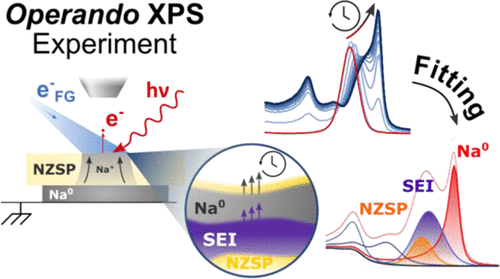.png)
Solid State
Energy Conversion
Devices
About Us
The research interests of Skinner research group centre on the properties and structures of ion-conducting oxides, with emphasis on the identification and characterisation of new materials using in- situ high-temperature techniques such as x-ray and neutron powder diffraction techniques, secondary ion mass spectrometry and low energy ion scattering. This work has potential applications in the development of solid oxide fuel cell, electrolysis and permeation membranes and more have been identified as having application in the field of novel solid-state gas sensors.
Our Latest Publications
Here, we investigated the high temperature structural properties of the LaNb1–xWxO4+d (x = 0.04–0.16) family, which is a structural analogue of hyper-stoichiometric CeNbO4+d.

Low-Temperature Exsolution of Ni–Ru Bimetallic Nanoparticles from A-Site Deficient Double Perovskites

A-site deficient double perovskite oxides, La2-xNiRuO6-δ (x = 0.1 and 0.15), are designed and subjected to low-temperature reduction leading to exsolution. The reduced double perovskite materials are shown to exsolve nanoparticles of 2–6 nm diameter during the reduction in the low-temperature range of 350–450 °C. The onset of the exsolution process is found to be within the first few minutes of the reduction reaction. In addition, the area-specific resistance of the electrode layers is found to decrease by 90% from 291 to 29 Ω cm2, suggesting encouraging prospects for these low-temperature rapidly exsolved Ni/Ru alloy nanoparticles in a range of catalytic applications.

Application of finite Gaussian process distribution of relaxation times on SOFC electrodes

Electrochemical impedance spectroscopy (EIS) is a powerful tool in characterisation of processes in electrochemical systems, allowing us to elucidate the resistance and characteristic frequency of physical properties such as reaction and transport rates. The essence of EIS is the relationship between current and potential at a given frequency. However, it is often the case that we do not understand the electrochemical system well enough to fit a meaningful physical model to EIS data. The distribution of relaxation times (DRT) calculation assumes an infinite series of relaxation processes distributed over a characteristic timescale. The DRT calculation may identify the number of processes occurring, as well as their respective resistivity and characteristic timescale, and may resolve processes which have relatively similar timescales.

Operando Characterization and Theoretical Modeling of Metal|Electrolyte Interphase Growth Kinetics in Solid-State Batteries. Part I: Experiments

To harness all of the benefits of solid-state battery (SSB) architectures in terms of energy density, their negative electrode should be an alkali metal. However, the high chemical potential of alkali metals makes them prone to reduce most solid electrolytes (SE), resulting in a decomposition layer called an interphase at the metal|SE interface. Quantitative information about the interphase chemical composition and rate of formation is challenging to obtain because the reaction occurs at a buried interface. In this study, a thin layer of Na metal (Na0) is plated on the surface of an SE of the NaSICON family (Na3.4Zr2Si2.4P0.6O12 or NZSP) inside a commercial X-ray photoelectron spectroscopy (XPS) system while continuously analyzing the composition of the interphase operando.
